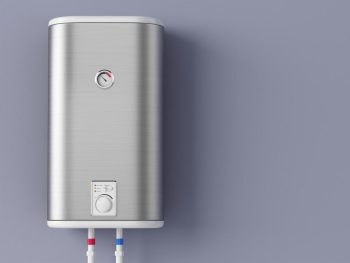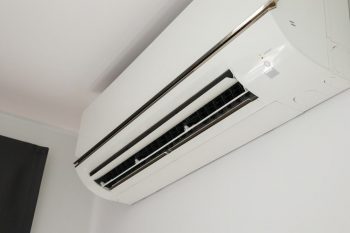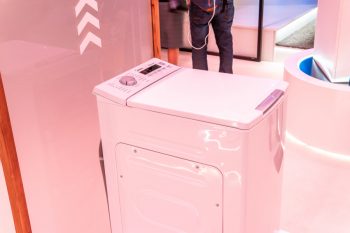
The invention of the washer and dryer revolutionized the way we do laundry. These machines have become household staples, saving us time and effort. But have you ever wondered who invented these convenient devices? Let’s delve into the history and evolution of the washer and dryer.
The first washing machine was invented by Jacob Christian Schäffer in 1767, but the first patented washing machine was by Nathaniel Briggs in 1797. The first electric-powered washing machine was invented by Alva J. Fisher in 1908. The first clothes dryer, known as a “ventilator,” was created in 1800 by M. Pochon from France, and the first automatic dryer was invented by George T. Sampson in 1892.
The Invention of the Washing Machine
Historically, washing clothes was a labor-intensive and time-consuming task. People had to hand-wash their clothes, a process that involved soaking, soaping, scrubbing, rinsing, and wringing out the garments. Thankfully, the invention of the washing machine drastically changed this.
The first washing machine was invented by Jacob Christian Schäffer in 1767. However, Nathaniel Briggs obtained the first patent for a washing machine in 1797. Schäffer’s invention laid the groundwork, while Briggs’ patent marked the beginning of the legal recognition of washing machine inventions.
The first significant evolution in washing machine design came in 1851 when James King invented the first drum washing machine. However, the real game-changer was the invention of the first electric-powered washing machine by Alva J. Fisher in 1908. He named his machine the Thor, and it was produced by the Hurley Machine Company of Chicago. The Thor was a drum-type washing machine with a galvanized tub and an electric motor.
The Evolution of the Washing Machine
Over the years, the design and functionality of washing machines have undergone significant transformation. The first automatic washing machine was introduced by the Bendix Aviation Corporation in 1937. In the early 1990s, upmarket machines introduced microcontrollers, which provided better timing and made washing machines cheaper. In 2001, the Whirlpool Corporation invented the first vertical axis, high-efficiency washing machine.
These advancements have made washing machines more electric, automatic, and fitted with features such as pressure switches, thermostats, timers, and sensors. These features allow for adjustments of parameters, weight sensing, different washing cycles, and energy and water-saving features.
The Invention of the Dryer
The first clothes dryer, known as a “ventilator,” was created in 1800 by M. Pochon from France. However, George T. Sampson is credited with inventing the first automatic clothes dryer, which he developed and patented in 1892. Sampson’s dryer used a rack and heat from a stove, rather than an open fire, which was an improvement over the earlier “ventilator” dryers.
The Evolution of the Dryer
Dryer design and functionality have also evolved significantly over the years. In 1946, dryer manufacturers moved controls to the front of the dryer, added a timer, an exhaust for moist air, temperature controls, and a cool-down cycle. In 1958, a 30-inch-wide dryer using a negative pressure system was introduced, which is still used in dryers today.
More recent advancements include the introduction of dryness sensors in 1959 to shut off the power when the load was dry. In 1974, microelectronic controls were put on dryers to time drying cycles, and in 1983, the first clothes dryers with delayed start timers allowed users to run dryers in off-peak hours.
The Impact of Washers and Dryers
The invention of washers and dryers had a profound impact on society. The electric washing machine reduced the time and effort required for washing clothes, allowing people to have more time for other activities. The washer and dryer also provided a more thorough and efficient cleaning of clothes, contributing to better overall hygiene and health.
Furthermore, these inventions led to the growth of the home appliance industry, creating jobs and contributing to the economy. They also spurred innovation in related fields, such as the development of detergents and other laundry products.
The Future of Washers and Dryers
The latest technological advancements in washing machines and dryers include smart features such as Wi-Fi connectivity, inverter motors, steam cleaning, dual-bin washing and drying, and sanitizing options. These features aim to make laundry tasks more convenient, efficient, and eco-friendly while providing better cleaning and drying results.
In conclusion, the washer and dryer have come a long way since their invention. Through continuous innovation and development, these machines have become more efficient, user-friendly, and environmentally friendly, making our lives easier and more convenient.
Frequently Asked Questions
Who was Nathaniel Briggs?
Nathaniel Briggs was an American inventor who is often credited with receiving the first patent for a washing machine in 1797. However, the specific details of his invention are not known as the patent was destroyed in the Patent Office fire in 1836.
What was the “ventilator” dryer invented by M. Pochon?
The “ventilator” was the first known clothes dryer, invented by M. Pochon in 1800. It was a metal drum with holes that was turned by hand over a fire. This design allowed for heat to circulate through the clothes, speeding up the drying process.
How did George T. Sampson’s dryer work?
George T. Sampson’s dryer, patented in 1892, used a rack and heat from a stove to dry clothes. The clothes were placed on a rack and then heated by the stove, which was a significant improvement over the “ventilator” dryers that used an open fire.
What is a negative pressure system in a dryer?
A negative pressure system in a dryer means that the air pressure inside the dryer drum is lower than the air pressure outside of it. This causes air to be drawn into the dryer, helping to circulate the hot air and dry the clothes more efficiently.
What are some examples of smart features in modern washers and dryers?
Modern washers and dryers include smart features such as Wi-Fi connectivity, allowing users to control and monitor their machines remotely using a smartphone app. Other features include inverter motors for quieter and more energy-efficient operation, steam cleaning for deep stain removal, dual-bin systems for washing and drying different types of clothes simultaneously, and sanitizing options to kill bacteria and allergens.












